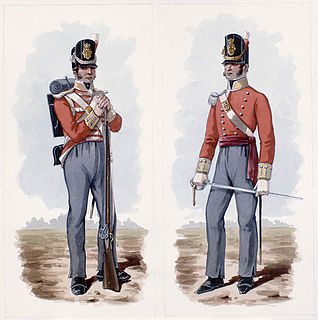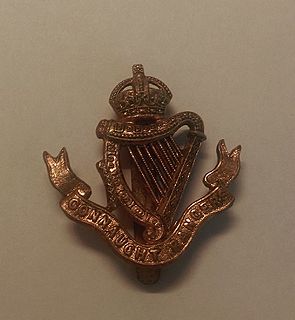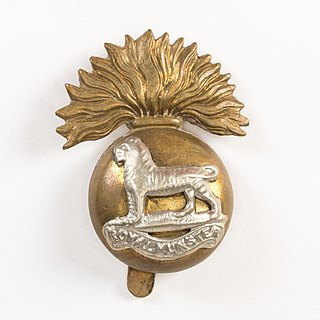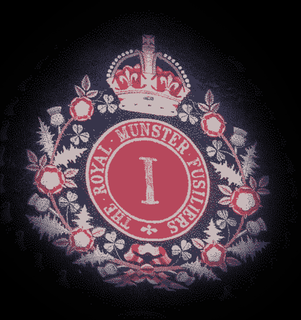 W
W1st Battalion, Ulster Defence Regiment was formed in 1970 as part of the 7 original battalions specified in The Ulster Defence Regiment Act 1969, which received Royal Assent on 18 December 1969 and was brought into force on 1 January 1970. It was amalgamated with the 9th Battalion, Ulster Defence Regiment in 1984 to form the 1st/9th Battalion, Ulster Defence Regiment.
 W
W2nd Battalion, Ulster Defence Regiment was formed in 1970 as part of the seven original battalions specified in the Ulster Defence Regiment Act 1969, which received Royal Assent on 18 December 1969 and was brought into force on 1 January 1970. It was, along with the rest of the regiment, amalgamated with the Royal Irish Rangers in 1992 to form the Royal Irish Regiment. It had previously been amalgamated in 1991 with the 11th Battalion Ulster Defence Regiment to form the 2nd/11th Battalion Ulster Defence Regiment.
 W
W3rd Battalion, Ulster Defence Regiment was formed in 1970 as part of the seven original battalions specified in The Ulster Defence Regiment Act 1969, which received Royal Assent on 18 December 1969 and was brought into force on 1 January 1970. It was, along with the rest of the regiment, amalgamated with the Royal Irish Rangers in 1992 to form the Royal Irish Regiment.
 W
W4th Battalion, Ulster Defence Regiment was formed in 1970 as part of the 7 original battalions specified in The Ulster Defence Regiment Act 1969, which received Royal Assent on 18 December 1969 and was brought into force on 1 January 1970. It was amalgamated with the 6th Battalion, Ulster Defence Regiment in 1992 to form the 4th/6th Battalion, Ulster Defence Regiment.
 W
WThe 4th Royal Irish Dragoon Guards was a cavalry regiment in the British Army, first raised in 1685 as the Earl of Arran's Regiment of Cuirassiers. It was renamed as the 4th Dragoon Guards in 1788 and service for two centuries, including the First World War, before being amalgamated with 7th Dragoon Guards, to form the 4th/7th Dragoon Guards in 1922.
 W
WThe 5th Royal Irish Lancers was a cavalry regiment of the British Army. It saw service for three centuries, including the First World War. It amalgamated with the 16th The Queen's Lancers to become the 16th/5th Lancers in 1922.
 W
WThe 6th Battalion, Ulster Defence Regiment was formed in 1970 as part of the seven original battalions specified in The Ulster Defence Regiment Act 1969, which received Royal Assent on 18 December 1969 and was brought into force on 1 January 1970. It was, along with the rest of the regiment, amalgamated with the Royal Irish Rangers in 1992 to form the Royal Irish Regiment.
 W
W7th Battalion, Ulster Defence Regiment was formed in 1970 as part of the 7 original battalions specified in The Ulster Defence Regiment Act 1969, which received Royal Assent on 18 December 1969 and was brought into force on 1 January 1970. It was amalgamated with the 10th Battalion, Ulster Defence Regiment in 1984 to form the 7th/10th Battalion, Ulster Defence Regiment.
 W
WThe 8th Battalion, Ulster Defence Regiment was formed on 1 December 1971 using companies, based in the east of the county, of the 6th Battalion Ulster Defence Regiment. It was, along with the rest of the regiment, subsumed into the Royal Irish Rangers in 1992 to form the Royal Irish Regiment.
 W
WThe 8th King's Royal Irish Hussars was a cavalry regiment in the British Army, first raised in 1693. It saw service for three centuries including the First and Second World Wars. The regiment survived the immediate post-war reduction in forces, and went on to distinguish itself in the battles of the Korean War, but was recommended for amalgamation in the 1957 Defence White Paper prepared by Duncan Sandys. The regiment was amalgamated with the 4th Queen's Own Hussars, to form the Queen's Royal Irish Hussars in 1958.
 W
WThe 9th Battalion, Ulster Defence Regiment was formed in 1972 from two companies of the 1st Battalion Ulster Defence Regiment creating a second battalion in County Antrim. It was amalgamated with 1 UDR in 1984 to form 1/9 UDR.
 W
WThe 10th Battalion, Ulster Defence Regiment was formed in 1972 from elements of the 7th Battalion, Ulster Defence Regiment creating a second battalion in Belfast. It was again amalgamated with 7 UDR in 1984 to form the 7th/10th Battalion, Ulster Defence Regiment.
 W
WThe 11th (Craigavon) Battalion, Ulster Defence Regiment was formed from companies of the 2nd Battalion Ulster Defence Regiment and the 3rd Battalion Ulster Defence Regiment in 1972. In 1991 under the reductions planned in Options for Change by the British Army, it again amalgamated with 2 UDR to form the 2nd/11th Battalion Ulster Defence Regiment.
 W
WThe 27th (Inniskilling) Regiment of Foot was an Irish infantry regiment of the British Army, formed in 1689. Under the Childers Reforms it amalgamated with the 108th Regiment of Foot to form the Royal Inniskilling Fusiliers in 1881.
 W
WThe 86th Regiment of Foot was an infantry regiment of the British Army, raised in 1793. Under the Childers Reforms it amalgamated with the 83rd Regiment of Foot to form the Royal Irish Rifles in 1881.
 W
WThe 87th Regiment of Foot was an infantry regiment of the British Army, raised in 1793. Under the Childers Reforms it amalgamated with the 89th Regiment of Foot to form the Princess Victoria's in 1881.
 W
WThe 88th Regiment of Foot was an infantry Regiment of the British Army, raised in 1793. Under the Childers Reforms it amalgamated with the 94th Regiment of Foot to form the Connaught Rangers in 1881.
 W
WThe 100th Regiment of Foot was raised in Ireland in 1804 for service in the Napoleonic Wars. After a few weeks, Lieutenant Colonel John Murray was appointed to command; he was to remain in this post for most of the regiment's active service.
 W
WThe Connaught Rangers were an Irish line infantry regiment of the British Army formed by the amalgamation of the 88th Regiment of Foot and the 94th Regiment of Foot in July 1881. Between the time of its formation and Irish independence, it was one of eight Irish regiments raised largely in Ireland. Its home depot was in Galway. It was disbanded following the establishment of the independent Irish Free State in 1922, along with the other five regiments that had their traditional recruiting grounds in the counties of the new state.
 W
WThe London Irish Rifles (LIR) was a volunteer rifle regiment of the British Army with a distinguished history, and now forms 'HQ Company' of the London Regiment and is part of the Army Reserve.
 W
WThe Prince of Wales's Leinster Regiment was an infantry regiment of the line in the British Army, formed in 1881 by the amalgamation of the 100th Regiment of Foot and the 109th Regiment of Foot. The 100th Foot was first raised in 1858 and the 109th was first raised in 1853. Between the time of its formation and Irish independence, it was one of eight Irish regiments raised largely in Ireland, its home depot in Birr. It was disbanded with the Partition of Ireland following establishment of the independent Irish Free State in 1922 when the five regiments that had their traditional recruiting grounds in the counties of the new state were disbanded.
 W
WThe Queen's Royal Irish Hussars, abbreviated as QRIH, was a cavalry regiment of the British Army formed from the amalgamation of the 4th Queen's Own Hussars and the 8th King's Royal Irish Hussars in 1958. The regiment saw active service against insurgents in Aden; during the Indonesia–Malaysia confrontation and during the Gulf War, as well as regular service in West Germany as part of the British Army of the Rhine. The regiment was amalgamated with the Queen's Own Hussars to form the Queen's Royal Hussars on 1 September 1993.
 W
WThe Royal Dublin Fusiliers was an Irish infantry Regiment of the British Army created in 1881, one of eight Irish regiments raised and garrisoned in Ireland, with its home depot in Naas. The Regiment was created by the amalgamation of two British Army regiments in India, the Royal Bombay Fusiliers and Royal Madras Fusiliers, with Dublin and Kildare militia units as part of the Childers Reforms that created larger regiments and linked them with "Regimental Districts". Both regular battalions of the Regiment fought in the Second Boer War. In the First World War, a further six battalions were raised and the regiment saw action on the Western Front, the Mediterranean, and the Middle East. In the course of the war three Victoria Cross were awarded.
 W
WThe Royal Inniskilling Fusiliers was an Irish line infantry regiment of the British Army in existence from 1881 until 1968. The regiment was formed in 1881 by the amalgamation of the 27th (Inniskilling) Regiment of Foot and the 108th Regiment of Foot.
 W
WThe Royal Irish Fusiliers was an Irish line infantry regiment of the British Army, formed by the amalgamation of the 87th Regiment of Foot and the 89th Regiment of Foot in 1881. The regiment's first title in 1881 was Princess Victoria's , changed in 1920 to the Royal Irish Fusiliers . Between the time of its formation and Irish independence, it was one of eight Irish regiments.
 W
WThe Royal Irish Regiment, until 1881 the 18th Regiment of Foot, was an infantry regiment of the line in the British Army, first raised in 1684. Also known as the 18th Regiment of Foot and the 18th Regiment of Foot, it was one of eight Irish regiments raised largely in Ireland, its home depot in Clonmel. It saw service for two and a half centuries before being disbanded with the Partition of Ireland following establishment of the independent Irish Free State in 1922 when the five regiments that had their traditional recruiting grounds in the counties of the new state were disbanded.
 W
WThe Royal Munster Fusiliers was a line infantry regiment of the British Army from 1881 to 1922. It traced its origins to the East India Company's Bengal European Regiment raised in 1652, which later became the 101st Regiment of Foot. The Royal Munster Fusiliers were formed in 1881 by the merger of the 101st Regiment of Foot and the 104th Regiment of Foot. One of eight Irish regiments raised largely in Ireland, it had its home depot in Tralee and served as the county regiment for Cork, Clare, Limerick and Kerry. At its formation the regiment comprised two regular and two militia battalions.
 W
WThe Royal Munster Fusiliers was a regular infantry regiment of the British Army. One of eight Irish regiments raised largely in Ireland, its home depot in Tralee. With the outbreak of World War I in August 1914 the immediate need for a considerable expansion of the British Army resulted in the formation of the New Army under Lord Kitchener. The war target was seventy divisions in all, the New Army to have thirty volunteer divisions separate and under Army Order 324, as additional from the Regular Army, with a planned period of service of at least three years. On 7 August a general United Kingdom-wide call for 100,000 volunteers aged 19–30 was issued. The battalions were to be distinguished by the word 'Service' after their number.
 W
WThe Royal Irish Rifles was an infantry rifle regiment of the British Army, first created in 1881 by the amalgamation of the 83rd Regiment of Foot and the 86th Regiment of Foot. The regiment saw service in the Second Boer War, the First World War, the Second World War, and the Korean War.
 W
WThe South Irish Horse was a Special Reserve cavalry regiment of the British Army. Formed on 2 January 1902 as the South of Ireland Imperial Yeomanry. It was renamed as the South Irish Horse from 7 July 1908 and transferred to the Special Reserve (Cavalry). Having taken part in the fighting of the First World War, it was disbanded in 1922.
 W
WThe Ulster Defence Regiment (UDR) was an infantry regiment of the British Army established in 1970, with a comparatively short existence ending in 1992. Raised through public appeal, newspaper and television advertisements, their official role was the "defence of life or property in Northern Ireland against armed attack or sabotage" but unlike troops from Great Britain they were never used for "crowd control or riot duties in cities". It was the largest infantry regiment in the British Army, formed with seven battalions plus another four added within two years.